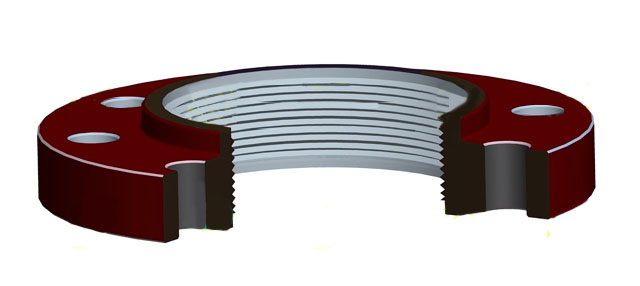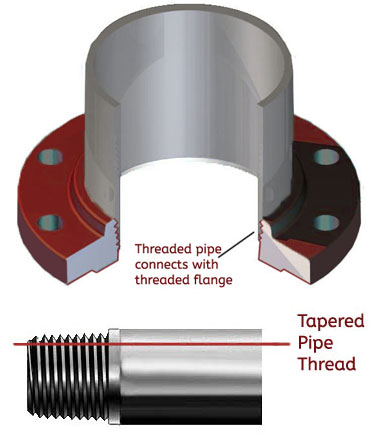A mid-ranged corrosion resistant 6Mo alloy with good strength
- Good corrosion resistance to moderate acids & sea-water
- 50% stronger than stainless steel
- Usable temperature limit of 1000°F
- AL6XN chemistry & specifications
- Threaded flange features and benefits
- AL6XN Datasheet
Originally developed to combat sea water corrosion, AL6XN has expanded its role as being good mid-range corrosion resistant alloy. AL6XN threaded flanges are a low carbon, high purity, nitrogen-bearing "super-austenitic" stainless alloy. Also considered a 6Moly alloy, AL6XN flanges are similar in chemistry and capabilities to Alloy 926 and SMO 254. With a higher nickel and molybdenum content than Duplex 2205 and Super Duplex 2507, it delivers better corrosion resistance while giving a more cost effective alternative to nickel super alloys like Inconel or Hastelloy in moderately corrosive conditions.
Corrosion Resistance
o Moderate general corrosion resistance
o Excellent chloride / salt water protection
o Good performance in phosphoric acid
o Moderate resistance to nitric acid

Chemical Resistance
In chemical processes which utilize chlorides, such as paper mills and waste water, stress corrosion cracking (SCC) is a common culprit for 316L stainless failures. Duplex alloys will outlast environments that will cause SCC in 316 stainless, but for more severe low PH environments, threaded flanges made from higher nickel content alloys like AL6XN will generally work better. For the most extreme situations, alloys with >45% nickel content like Hastelloy are often considered.
Outstanding Resistance to Salt Water
Seawater is where AL6XN threaded flanges outperform so many alloys providing protection to stress corrosion cracking, pitting and crevice corrosion in a broad range of marine applications. AL6XN threaded flanges contain a minimum of 6% molybdenum content and it is this addition of molybdenum that provides the greatest protection against pitting and crevice corrosion.
Mechanical Properties
Electrical Resistivity: 535 Ohm-circ mil/ft
Ultimate Tensile Strength: 108 ksi
0.2% Yield Strength: 53 ksi
Density: 0.291 lb/in 3

Chemistry
o High molybdenum content provides enhanced corrosion protection in chloride environments.
o Carbon helps to prevent sensitization during welding
o Chromium enhances pitting and crevice corrosion resistance
o The interstitial strengthening effect of nitrogen gives AL6XN threaded flanges good high strength properties
AL6XN Applications
o Desalination plants depend on AL6XN threaded flanges for the salt water corrosion protection
o Pulp bleaching equipment and piping
o The power industry uses AL6XN threaded flanges where salt water and chlorides are present such as steam surface condensers, supercritical, high pressure, feed water heaters, steam surface condensers, flue-gas desulfurization equipment and in nuclear power water piping
o Offshore
o Chemical Processing - processing tanks, vessels and pipes as well as plate and frame heat exchangers.
Resources: AL6XN Torque Specs, Flange Dimensions, Flange Bolting Chart
Flange Types Available: Blind Flanges, Lap Joint Flanges, Slip On Flanges, Socket Weld Flanges, Threaded Flanges, Weld Neck Flanges
AL6XN Chemical Composition & Specifications
AL6XN Specifications: UNS N08367, ASTM A 240, ASTM B 688, ASME SA-240, ASME SB-688, ASTM B690, ASTM B691, ASTM A240, ASTM B688, ASME SA-240, ASME SB-688

AL6XN Mechanical Data
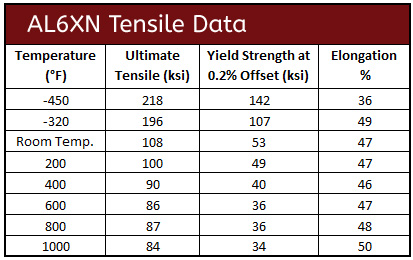
Corrosion Curves for AL6XN
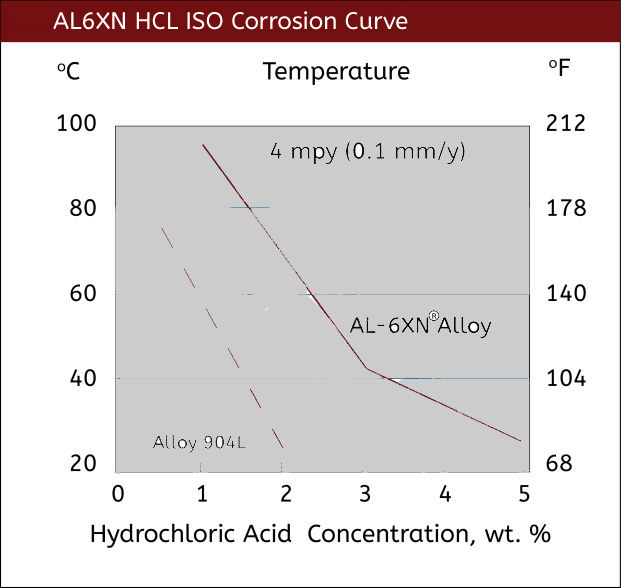
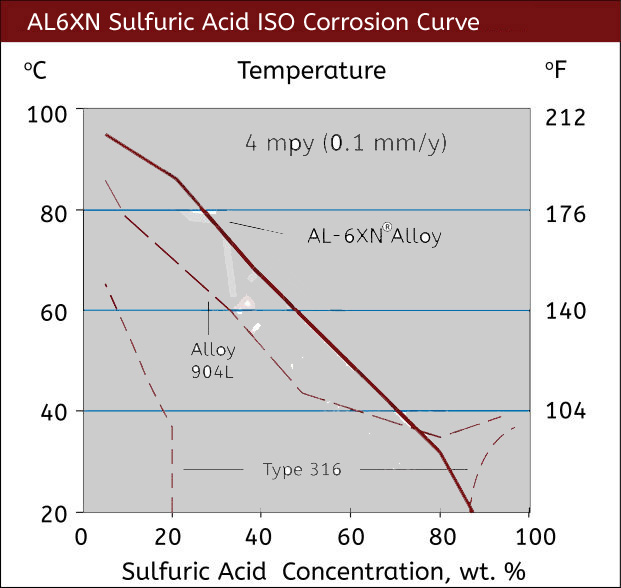

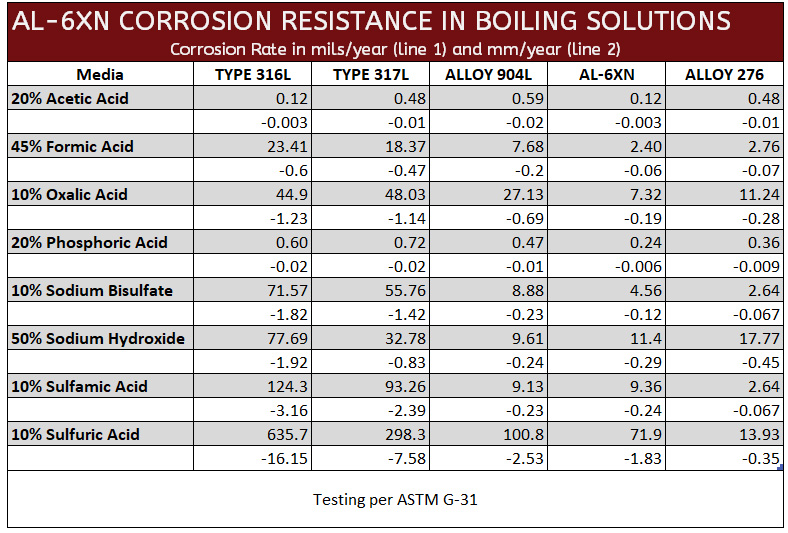
AL6XN Threaded Flange Features & Benefits
AL6XN threaded flanges have a tapered female thread to join the male threads of a pipe in order to create a tight seal. This type of flange is most ideal when post weld heat treatment is not possible in hazardous, flammable or explosive applications where welding is too dangerous. AL6XN threaded flanges are also convenient in pilot processes whose configuration is often changed.
Threaded Flange Advangtages
- The main benefit is that that threaded seal eliminates the need for welding.
- As they do not require welding they save time and money to install.
- Allow for connections to be made in dangerous, explosive applications where welding is not possible.
- Useful connection in materials that are difficult to create a successful and strong weld.
- Ideal for connecting small diameter pipes.
- Systems could be easily reconfigured.
Threaded Flange Disadvantages
- They are not suitable where high temperatures, frequent cyclic conditions or bending stresses are likely in applications.

